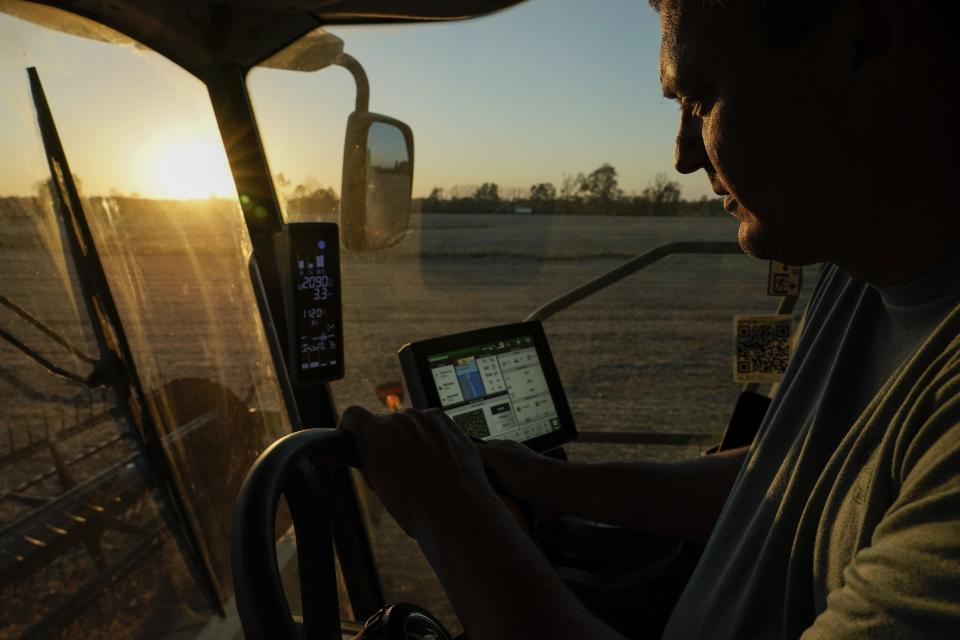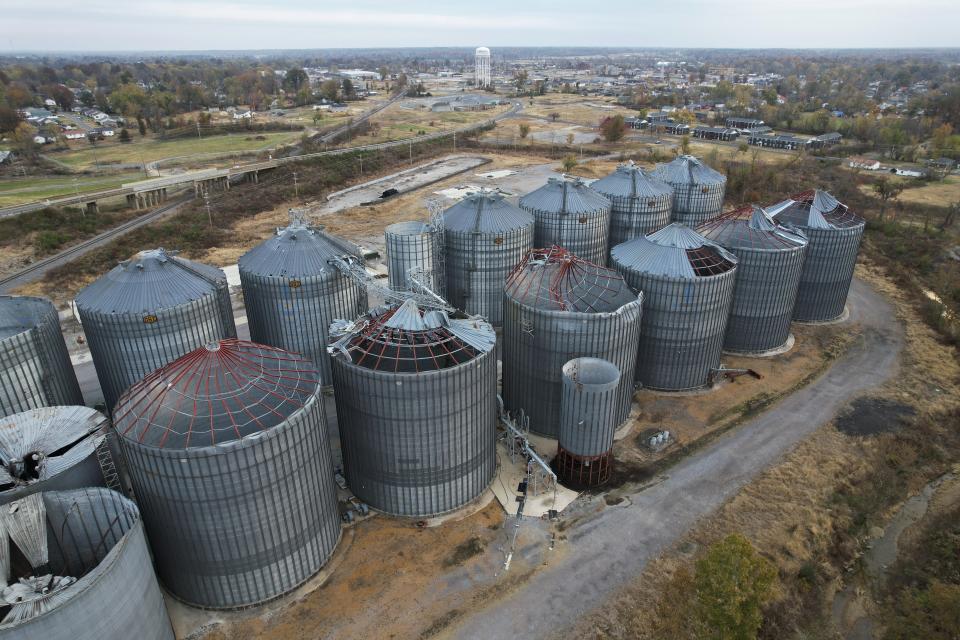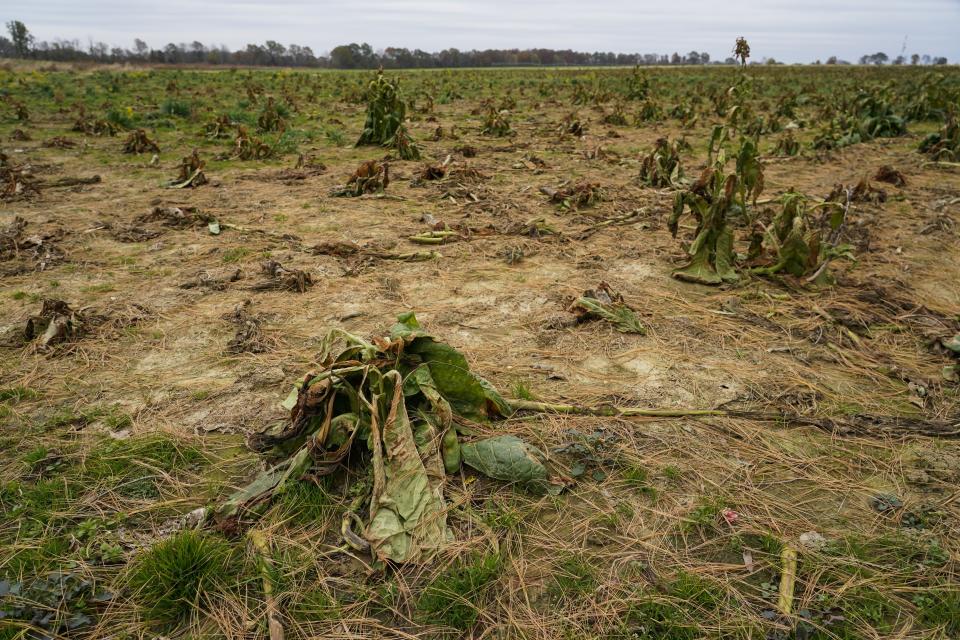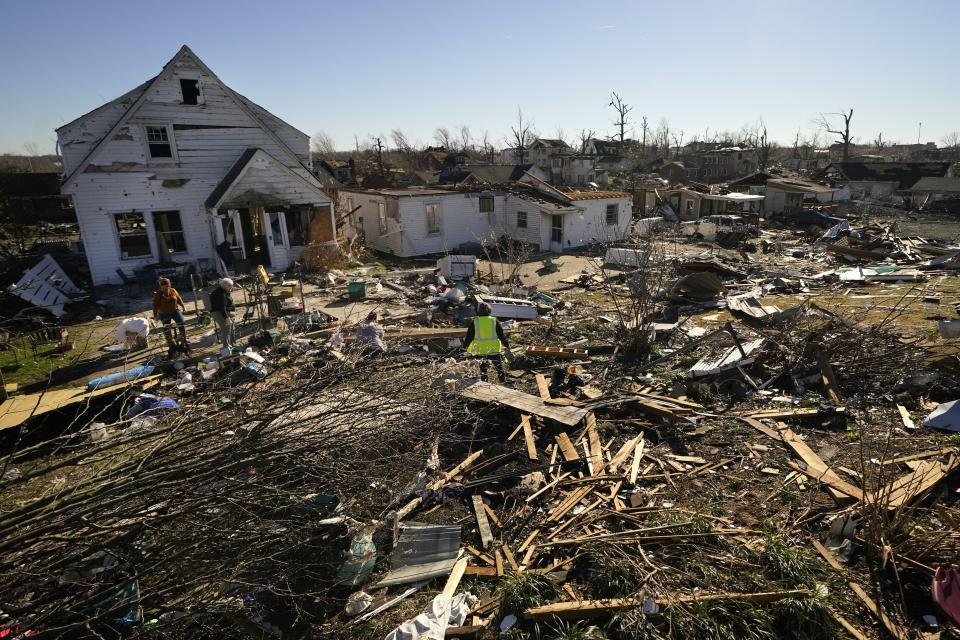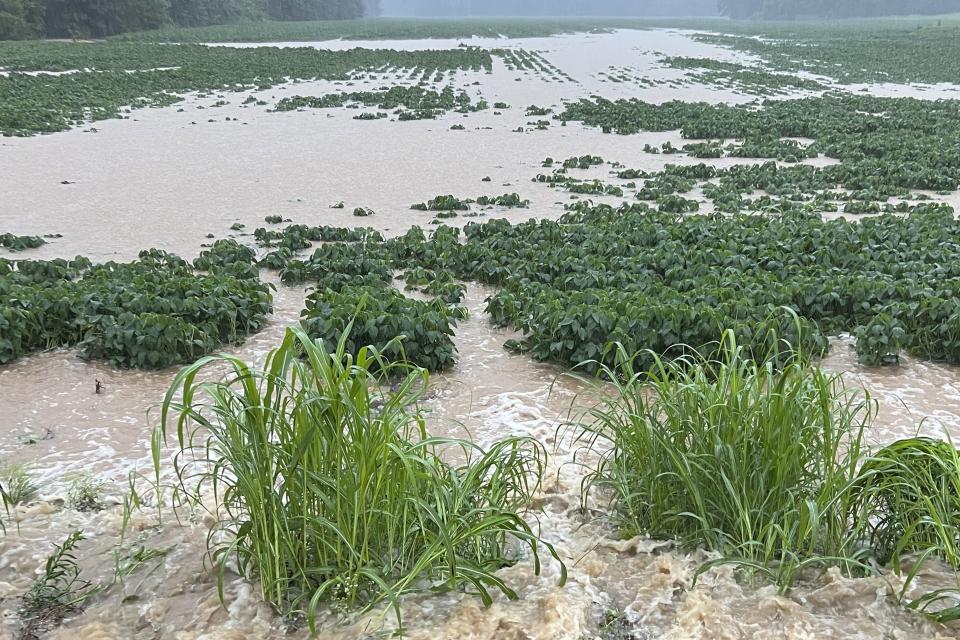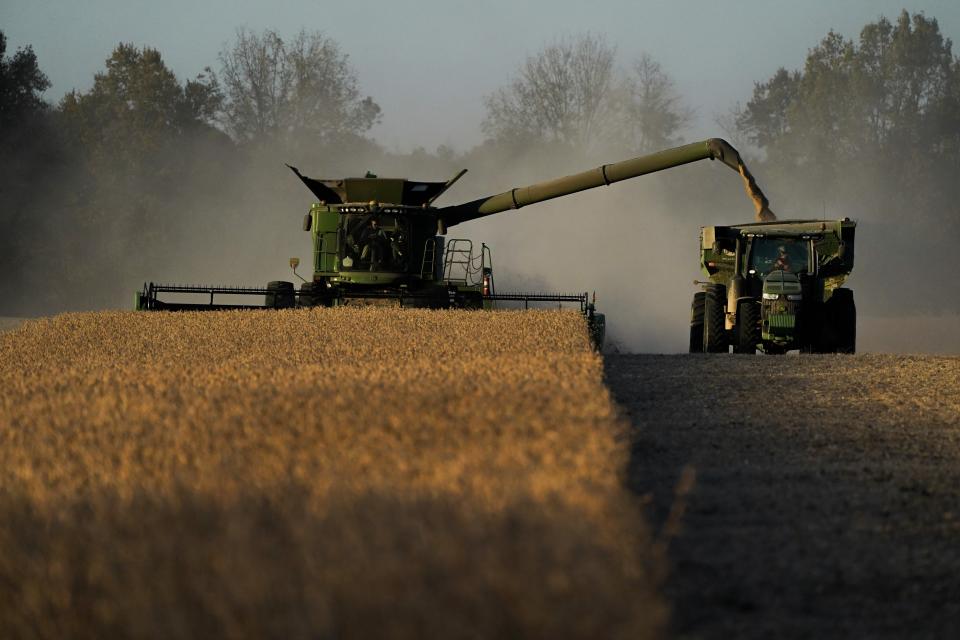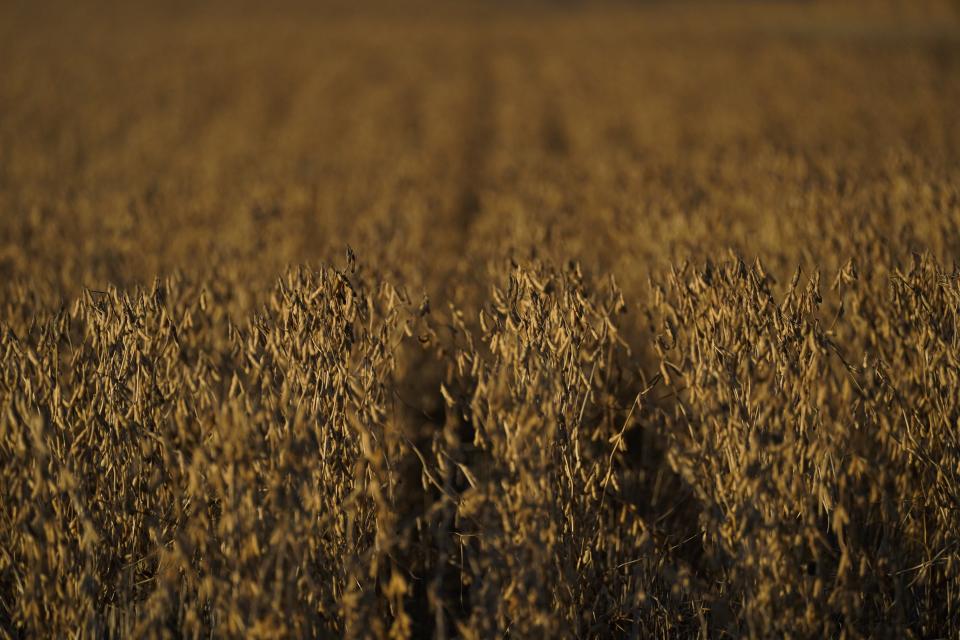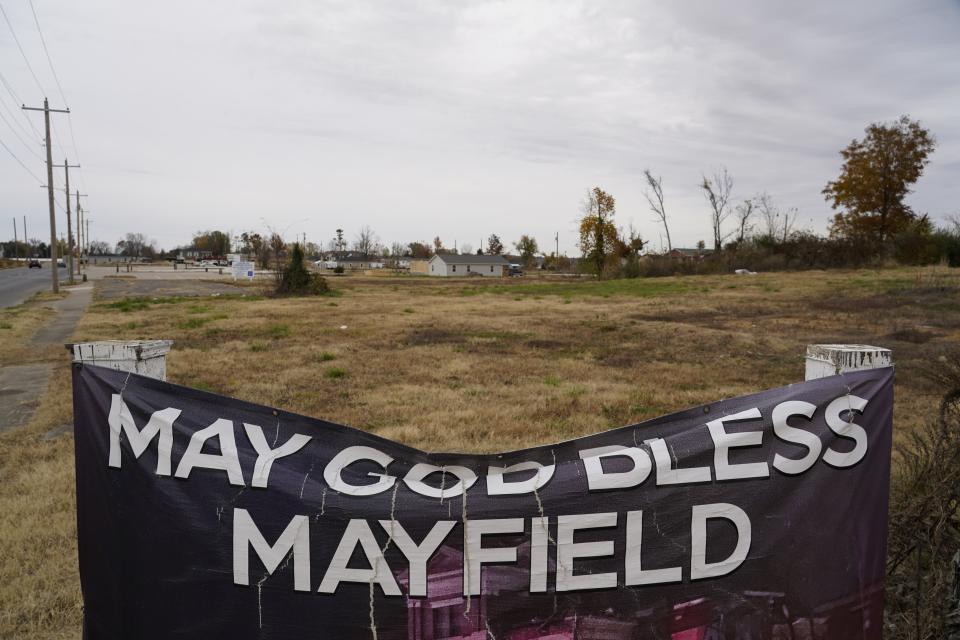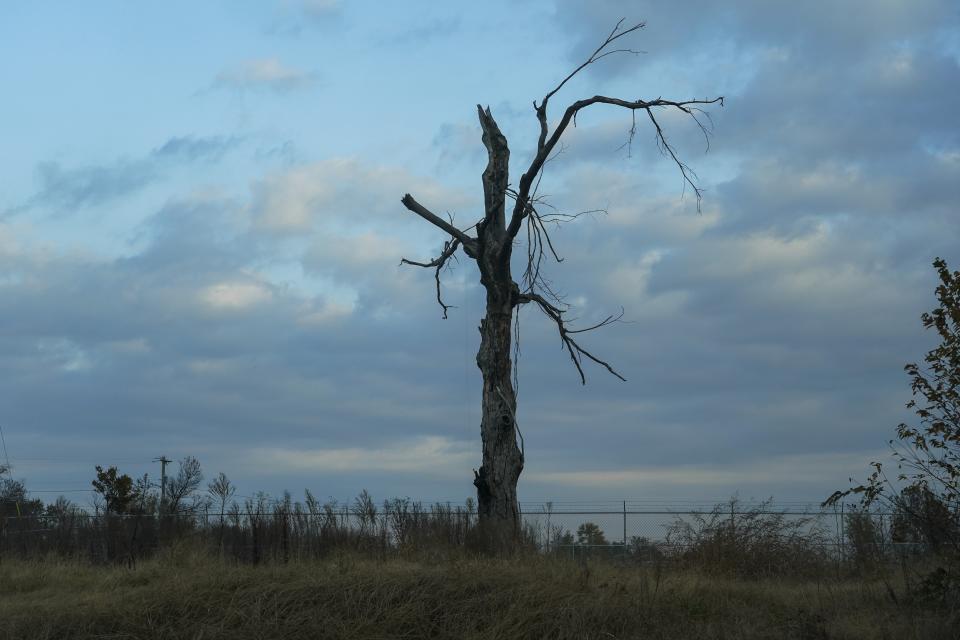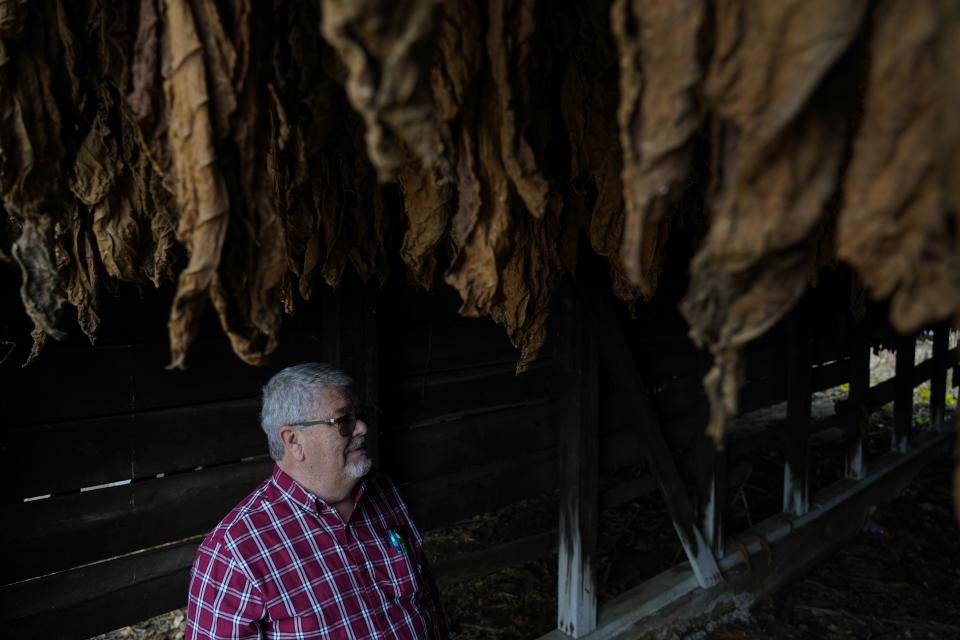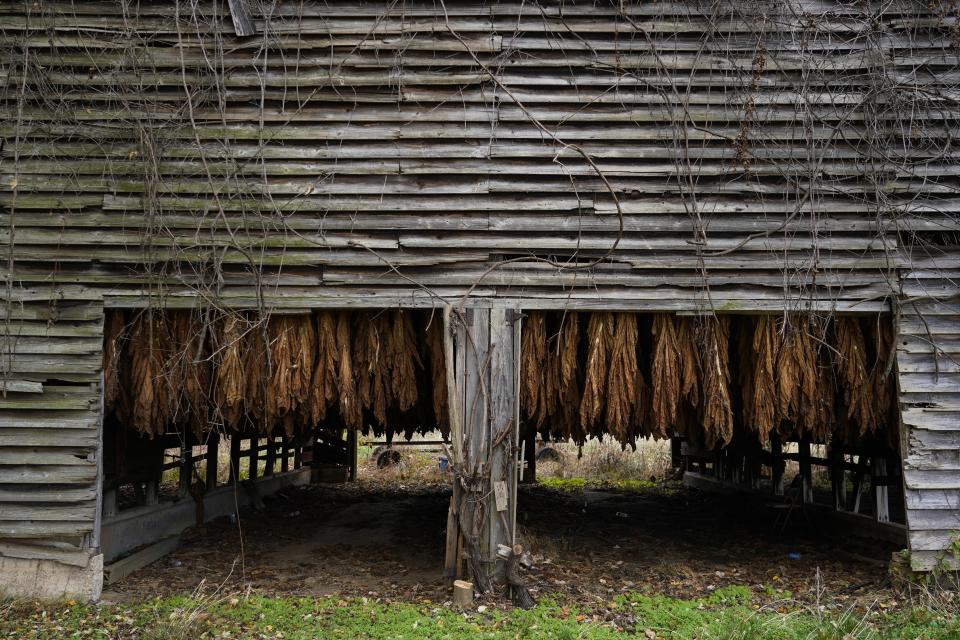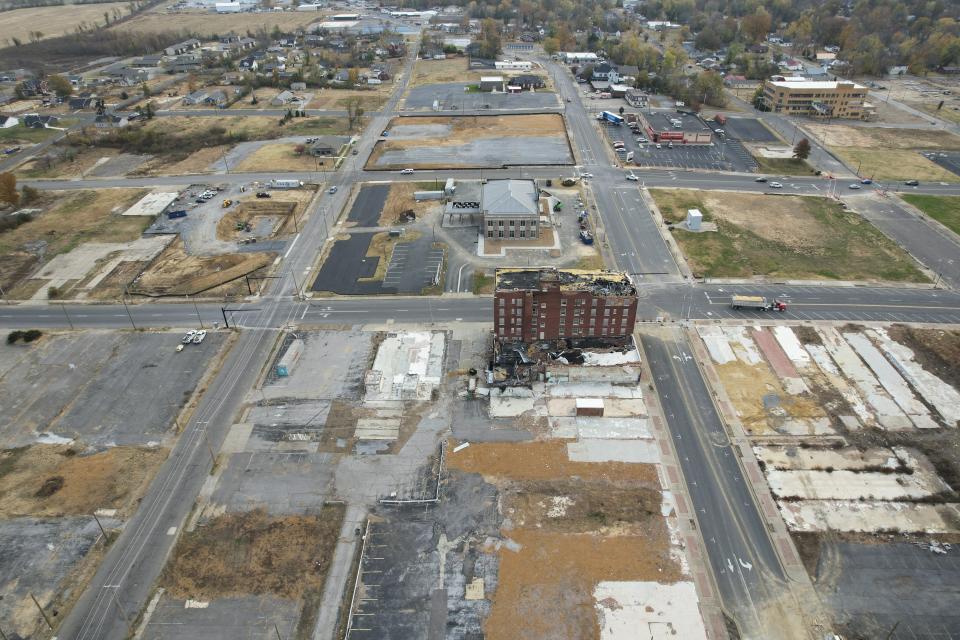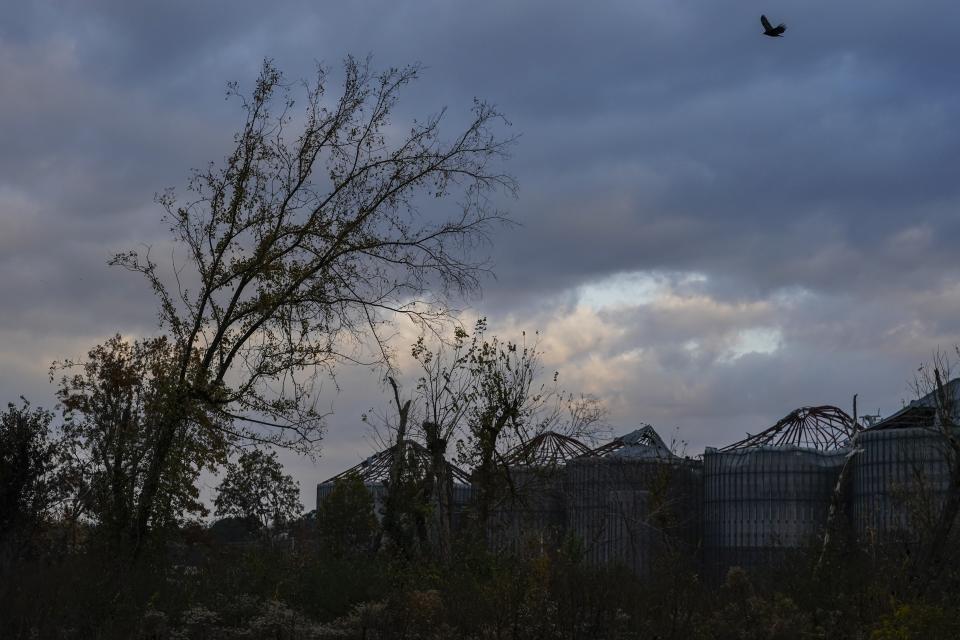Extreme weather can hit farmers hard. Those with smaller farming operations often pay the price
MAYFIELD, Ky. (AP) — Justin Ralph estimates he's made about 200 trips delivering grain from the fields he farms with his brother and uncle this year. They're accustomed to using their four semi-trucks to take the harvest from a total of about 800 acres each of corn, soybeans and wheat to market.
What they're not used to are the distances they've had to drive the past couple years, a consequence of bad weather that's only expected to increase in their area as a result of climate change. They used to take advantage of a grain elevator in Mayfield, Kentucky — a massive facility that bought and stored millions of bushels of grain from farmers. But it was destroyed in the 2021 tornado outbreak that killed dozens of people and leveled entire parts of the town, and the company that ran it shut down. Now, instead of driving ten minutes, they sometimes travel an hour or more.
“The swings in the weather events that we have ... that’s kind of scary,” he said, especially for those with smaller farms. “If you’ve got a larger farm operation, your acreage is spread out over a larger area, so the risks are probably minimized more because they’re spread out more.”
Farmers and experts echo Ralph and say that larger farms have more ways to manage risk, but smaller to midsize farmers struggle when extreme weather hits. Human-caused climate change is only anticipated to amplify the number and intensity of those extreme events, from flash droughts to increased rainfall. And as the planet warms, scientists say the country will see more tornado- and hail-spawning storms and that those deadly events will strike more frequently in populous mid-Southern states a big issue for everyone living in those areas and especially for those trying to hold onto small family farms.
That's already a reality for the area around Mayfield, which is in a flat coastal plain region in the western part of the state and which has been hit by extreme weather in more ways than one. In addition to the 2021 tornado outbreak, this summer they were hit by flooding that surpassed 10 inches in some areas, submerging crops.
Keith Lowry, another farmer near Mayfield, woke up one morning this summer to eight inches of rain, and by dinner time, when the deluge finally stopped, knew he had a problem.
Lowry found fields of half-submerged corn, soybeans that had disappeared under the flooding almost entirely and rapids rushing from their spillway like a waterfall. Now, at harvest time, he estimates that they lost between five and 10% of their crop this year. What’s more, they had to deal with the debris that had washed into their fields, a nuisance that gets in the way of heavy machinery.
Lowry has a relatively big operation — 3,000 acres, mostly in corn and soybeans, along with another 2,000 acres his son farms. Although he took some losses, he says that he and other farmers are used to dealing with uncooperative weather. “That’s the nature of the beast,” he said.
But without the grain elevator or on-farm storage and with limited transportation options, Lowry explained that his neighbors would have been stuck with soybeans in their fields. That's why a cloudy day this November found him helping out on a much smaller parcel of land, to bring in a harvest from about 250 acres.
While farmers and town residents have leaned on each other to be resilient, the compounding effect of those natural disasters has had lasting impacts on a community where agriculture is at the heart of commerce.
“Because we have such a big county that’s really heavily populated with grain farmers, the loss of (the grain elevator) has forced them to move to surrounding counties, oftentimes 40 or 50 miles away to transport their grain,” said Miranda Rudolph, the University of Kentucky's cooperative extension agent for Graves County. She said that fuel costs have risen, adding to the strain.
Hans Schmitz, a conservation agronomist with Purdue's extension agency, said that large farms tend to have a wider range of options to balance out their risk, including crop insurance, which often costs less per acre when applied to larger areas.
Jed Clark, for example, who farms about 3,000 acres of grain near Mayfield, said that he relies on crop insurance and also tries to spread out his crop rotations strategically, betting that crops in a low-lying area will do well in a dry year and that crops on higher ground will outlast the ones that are washed out when it floods.
On smaller farms, if farmers are forced to put everything in a low-lying area that floods, an entire crop can be affected, Schmitz said. Farmers with less land therefore sometimes look toward specialty crops like watermelon or tomato to try to increase profits with the acreage they have, but those crops are not as easily insured.
Schmitz said he thinks that climate change is contributing to the consolidation of farmland — that is, large farms getting larger. It’s relatively easy for a very small farm to get started, but harder to stay afloat. “What concerns me is the hollowing out of the middle,” he said.
The capability of a smaller farm to survive also has to do with infrastructure, said Adam Kough, another Kentucky farmer who has a mostly family-run 1200 acres of corn, soybeans and wheat (as well as two swine barns and 100 sheep) between Mayfield and Murray. He thinks the farmers who were hurt the most after the tornado were those who didn't have grain storage on their land.
Kough said he has noticed changes in the weather over the years, but he thinks a corporate mentality has more to do with why big farms will always get bigger. “People have changed more than the weather has,” he said. “The morals have changed in the last 20 years ... I call it cutthroat."
Still, the weather impacts are undeniable. Schmitz, who also farms about 1200 acres of corn, soybeans and wheat in Indiana, says that he's seen increasing summertime humidity foster diseases of wheat, barley and oats in the Midwest. He's seen higher nighttime temperatures induce more heat stress on most crops. And he said that while some farmers turn to irrigation to get them through sudden and intense droughts — he's seen those same irrigation pivots end up in standing water after intense and sudden floods.
“It goes back to the old saying that in the Midwest, ‘if you don’t like the weather, wait 5 minutes.' We certainly always have had the capacity for pretty significant changes in weather over a short period of time,” he said. “But to see climate change exacerbating those potential extremes both ways within a short period of time is disconcerting.”
___
Associated Press journalist Joshua Bickel contributed to this report.
___
Read more of AP’s climate coverage at http://www.apnews.com/climate-and-environment
___
Follow Melina Walling on X, formerly known as Twitter: @MelinaWalling.
___
Associated Press climate and environmental coverage receives support from several private foundations. See more about AP’s climate initiative here. The AP is solely responsible for all content.
